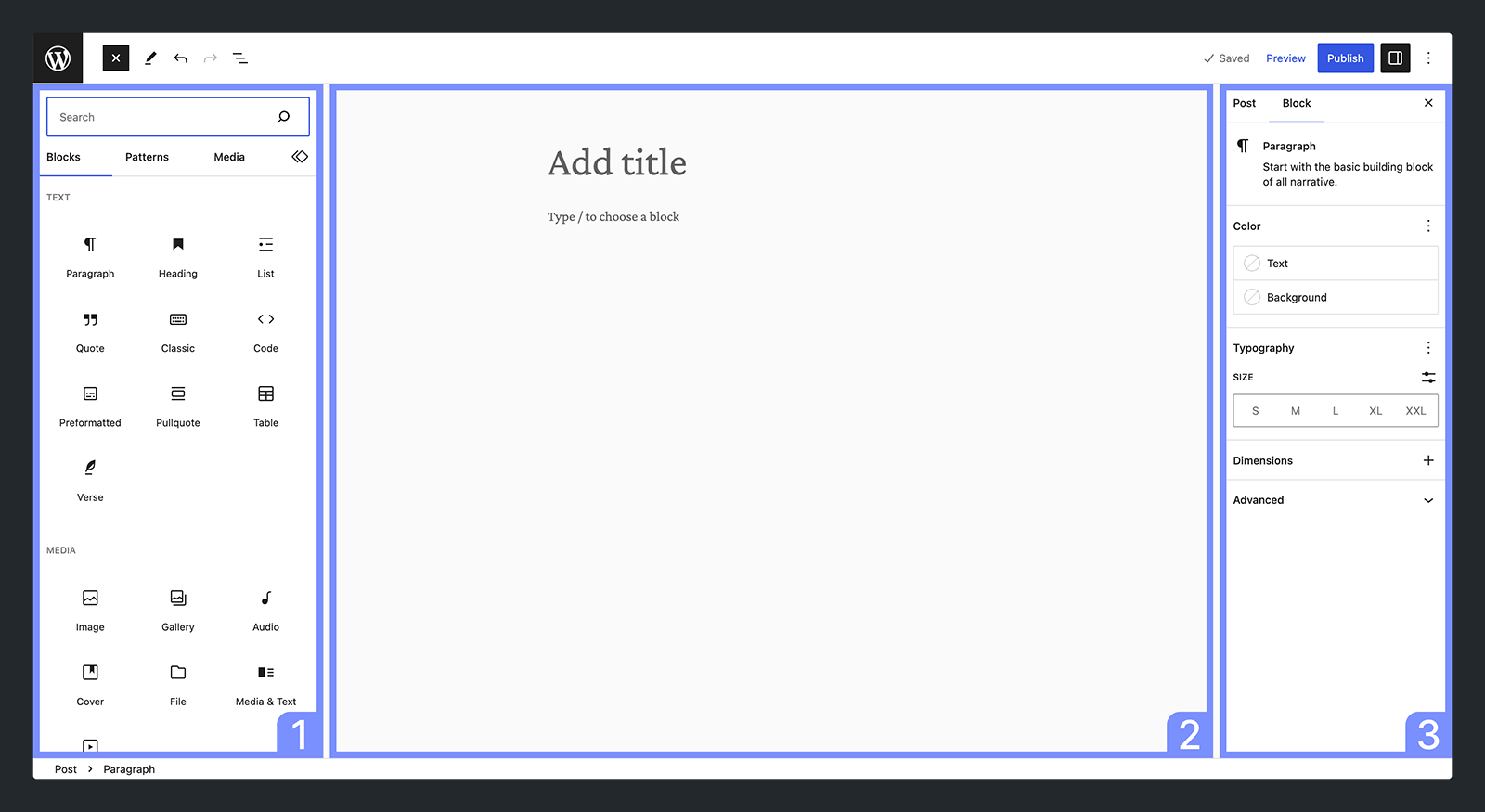In 2018, Boise State launched its current WordPress theme, a digital canvas designed in large part using technology from 2016. In 2024, it’s become evident that our website, our digital front door, requires a transformation to stay current and enhance our ability to communicate effectively with our community.
The technology that operates as our theme’s backbone is now outdated, limiting our access to newer features and functionality available in WordPress, particularly in content editing. This older technology is incompatible with upcoming versions of PHP, the underlying framework that powers WordPress, requiring a significant update to our theme to ensure compatibility, improve functionality, and solve current (and future) content challenges.
Say hello to Gutenberg!
The future of web content creation at Boise State will change dramatically with the introduction of Gutenberg, WordPress’s native theme editor. This marks a significant shift from the traditional text editor-like environment to a more dynamic and modular approach to content creation.
The transition to Gutenberg requires us to rethink our approach to web content. Instead of viewing web pages as static text documents, we must envision them as compositions of various elements that together tell a cohesive story. With Gutenberg, every piece of content on our website becomes a separate block — from text and images to headings and lists. This block-based approach offers a more intuitive, intentional, and flexible way to construct our digital stories.

Learn more about how Gutenberg works.
Panels and blocks
The panels used in our theme since 2018 are similar to blocks, and will continue to be available with Gutenberg. They will also be improved; we will have the ability to control spacing between panels, and we can leverage new features such as accordion menus to collapse and expand sections of content.
We’ll also introduce new functionality to provide a second level of section navigation.
Updating to Gutenberg
With 75,000 web pages and over 600 sites hosted in our web environment, the migration to Gutenberg will be a significant university effort. Our strategy involves collaborating closely with site administrators to convert and review each page, ensuring that the new system accurately reflects intended content and design. This process will prioritize larger sites for gradual conversion, while smaller sites will undergo a more immediate update.
Content management strategy
The fewer pages to convert, the sooner the migration to Gutenberg will be complete.
For comparison, many of our peer universities have websites that are 75% smaller than Boise State’s, with one university’s new content management strategy expected to result in a website that is 91% smaller than our site within the next couple of years.
Smaller websites focus resources on creating and managing content that is actively engaging current and prospective students, faculty, and staff. By focusing on fewer, more impactful pages, we can enhance user engagement, improve content discoverability, ensure our digital efforts align more closely with Boise State’s strategic goals, and effectively recruit prospective students (and retain current students) while making our site more navigable.
We’ll soon begin an initiative with academic and administrative steering committees to develop a university web content management strategy that ensures resources are allocated to managing content that matters most to our website visitors.
Next steps
We’re in the initial phases of testing and refining the Gutenberg theme editor. More information about training sessions, learning resources, and content migration will be available later this spring.
Our transition to Gutenberg is not just a technical update; it’s a step towards a more innovative, accessible, and engaging digital presence for Boise State University. We appreciate the patience and collaboration of our campus WordPress community as we navigate this new journey.